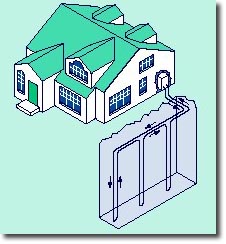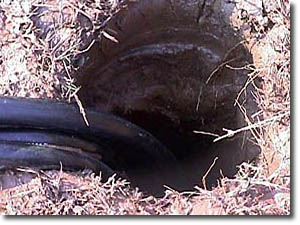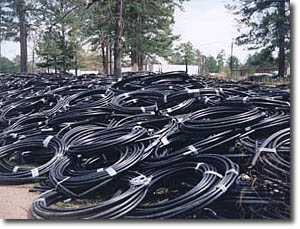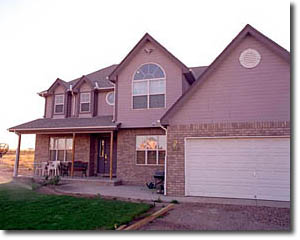
Energy —Geothermal Heat Pumps
 Source: DOEPipes need only go down about 8 feet before the earth is at a relatively constant temperature. Pumping a fluid through the pipes allows for heat exchange and hence heating and cooling .
Source: DOEPipes need only go down about 8 feet before the earth is at a relatively constant temperature. Pumping a fluid through the pipes allows for heat exchange and hence heating and cooling .This is perhaps one of the very best methods of both heating and cooling your home or office (and you also get cheap hot water in the summer). It works because unlike the air temperature which can vary greatly, the temperature of the earth is relatively constant (once you get deep enough). Here I am not talking about going very deep, only a few meters; once you start getting deeper, then the temperature of the earth increases as you get closer to the hot core. But at a few meters down, the temperature will be a constant value. We make use of this feature in PA since we have some caves in the mountains where the thermal mass of the mountain is so large that the temperatures in the caves are constant— great for Yuengling - to cool their beer, or for the growing of mushrooms. It is called geothermal energy because it is energy from the ground, but it is actually mostly stored solar energy.
Not only can this stored solar energy be used to heat your home, it can also cool your home and in the summer provide hot water, too.
Heating
 Source: NRELPipes enter and exit this vertical hole in the ground. Most systems will be closed loop systems like this, although you could take the water out of the ground in an open loop system as the water temperature will be the same constant temperature.
Source: NRELPipes enter and exit this vertical hole in the ground. Most systems will be closed loop systems like this, although you could take the water out of the ground in an open loop system as the water temperature will be the same constant temperature.So, it is a cold winter day, the outside air temperature is 30 °F, but the temperature of the ground 10 feet down is a balmy 50 °F. By putting pipes in the ground, we can exchange the heat from the ground to the house. A fluid is pumped through a closed loop of piping into the earth where it warms up. See the GeothermalGenius animation (3 min.)
Note: the system isn't 400% efficient as claimed, that is not possible. It does use electricity to take advantage of the heating and cooling available through "free" geothermal energy.
Cooling
 Source: NRELSome large establishments will require lots of heat exchange like this one. Geothermal heaters are sized by the mass of the coolant fluid.
Source: NRELSome large establishments will require lots of heat exchange like this one. Geothermal heaters are sized by the mass of the coolant fluid.So, it is a balmy 90 °F outside, but the ground is a cool 50 °F. We can now move heat from the house into the ground. All we need to pay for is the electricity to circulate the cooling fluid. You can also produce hot water via this method, more cheaply than using electricity, to heat cold water to hot water for your showers or clothes washer.
Geothermal heat pumps are sold by the weight of the cooling fluid. Some of the facilities require lots of pipes to provide enough heating and cooling for large buildings. This is the barrier to using geothermal heat pump - the high initial cost (capital cost). After that, the cost of electricity is low and no fuel costs, thus producing cheap heating and cooling without air pollution (apart from the electricity needed to run the pumps).
